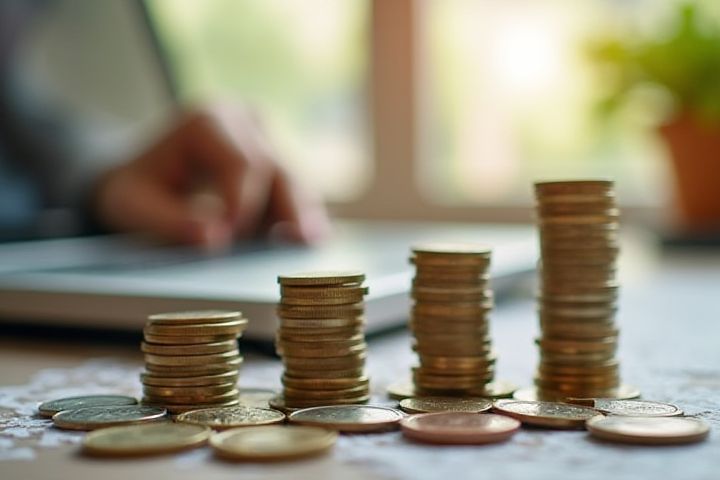
House flipping profit is the financial gain realized from purchasing a property, renovating it, and then selling it for a higher price. The profit calculation involves subtracting total expenses, including the purchase price, renovation costs, real estate agent fees, and closing costs, from the final sale price. Successful house flippers often identify undervalued properties in desirable neighborhoods, allowing for significant appreciation post-renovation. You can maximize your profit by focusing on cost-effective upgrades that appeal to potential buyers, such as modern kitchens, updated bathrooms, and curb appeal enhancements. Understanding local market trends is crucial for making informed decisions that lead to profitable flips.
What Is House Flipping Profit
Purchase Price
The purchase price is a critical factor in house flipping profitability, typically constituting around 70% of your total project costs. To maximize your profits, aim for properties listed at least 20% below market value, allowing room for renovations and unforeseen expenses. According to industry statistics, successful flippers often achieve a gross profit margin of 15% to 30% on their investments. By strategically negotiating the purchase price, you position yourself to recoup your expenses and realize a significant return on your investment.
Renovation Costs
House flipping requires careful management of renovation costs to maximize profit margins. On average, renovation expenses can account for 30% to 50% of your total budget, emphasizing the need for profitable upgrades that enhance property value. Common renovations, such as kitchen remodels, can yield a return on investment (ROI) as high as 75%, while bathroom upgrades also provide substantial returns, around 60%. Understanding these costs and potential returns is crucial for achieving successful outcomes in your house flipping ventures.
Holding Costs
Holding costs are essential to consider when flipping houses, as they significantly impact your overall profit margin. These costs, which include property taxes, insurance, utilities, and maintenance fees, can accumulate quickly, often reaching thousands of dollars monthly. For instance, an average holding cost can be around 1% to 2% of the property's value each month. By effectively managing these expenses, you can maximize your return on investment and ensure that your house flipping venture remains financially viable.
Selling Price
The selling price is a critical factor when determining profit in house flipping, often impacting your return on investment significantly. A thorough market analysis can reveal comparable sales in the area, allowing you to set a competitive selling price that maximizes profit while attracting buyers. It's essential to consider the average selling price per square foot in your neighborhood; for instance, homes in desirable locations can sell for $150 to $300 per square foot. When calculating potential profit, ensure you subtract renovation costs and other expenses from the final selling price to assess your actual earnings accurately.
Real Estate Agent Fees
In house flipping, Real Estate Agent fees typically range from 5% to 6% of the home's sale price, significantly impacting overall profitability. For instance, if a property sells for $300,000, the agent fees could amount to $15,000 to $18,000. These costs emphasize the importance of accurately calculating expenses to ensure a profitable turnaround. Understanding these fees enables you to maximize your investment returns when navigating the competitive real estate market.
Closing Costs
Closing costs typically range from 2% to 5% of the home's purchase price, impacting your overall profit when flipping a house. For a property bought at $300,000, expect to pay between $6,000 and $15,000 in closing fees, which include inspections, title insurance, and lender charges. Accurate budgeting for these expenses is crucial, as underestimating can severely reduce your potential net gain. You should factor these costs into your financial calculations to ensure a profitable house flipping venture.
Market Conditions
House flipping profit significantly depends on prevailing market conditions. In a seller's market, where demand outstrips supply, properties can sell at prices exceeding their purchase price, often leading to profits of 20% or more. Conversely, in a buyer's market, you might encounter more competition to sell, which can compress margins, yielding profits of around 5-10%. Thoroughly researching local trends, such as median home prices and average days on market, is crucial for maximizing your return on investment.
Tax Implications
House flipping can yield significant profits, but it is crucial to understand the tax implications involved. Profits made from flipping properties are generally considered ordinary income, thus subject to federal income tax rates ranging from 10% to 37%, depending on your tax bracket. Short-term capital gains tax applies if the property is held for less than one year, often resulting in a higher tax liability. You may also incur additional self-employment taxes if you are classified as a real estate dealer, further impacting your overall profit margins.
Financing Options
House flipping can yield substantial profits, particularly when you secure optimal financing options. Hard money loans, typically ranging from 8% to 12% in interest rates, provide quick access to capital, essential for purchasing distressed properties. Alternative financing methods, like FHA 203(k) loans, enable you to finance both the purchase and renovation costs, potentially covering up to 96.5% of the total investment. By leveraging low-interest personal loans or utilizing cash reserves, you can maximize your return on investment, enhancing your profitability in the competitive real estate market.
Return on Investment
House flipping can yield a Return on Investment (ROI) between 10% to 30%, depending on market conditions and the amount invested in renovations. Successful flippers often target properties that can be purchased below market value, typically around 70% of the after-repair value (ARV). For example, if you buy a property for $200,000 and invest $50,000 in renovations, selling it for $300,000 could produce a profit of $50,000, resulting in a 25% ROI. Understanding local real estate trends and budget management are crucial for optimizing your flipping profits.
